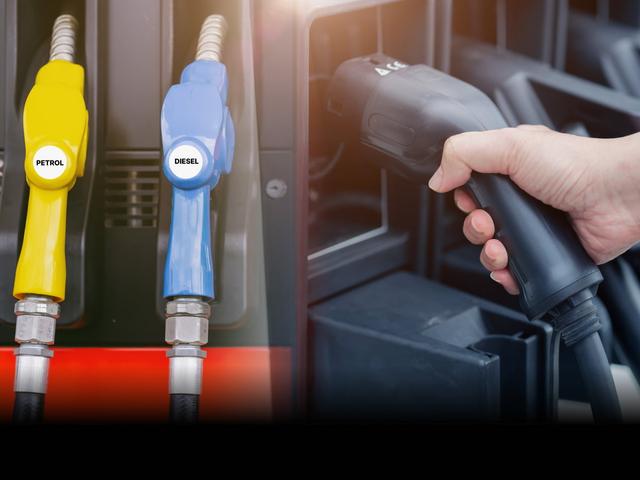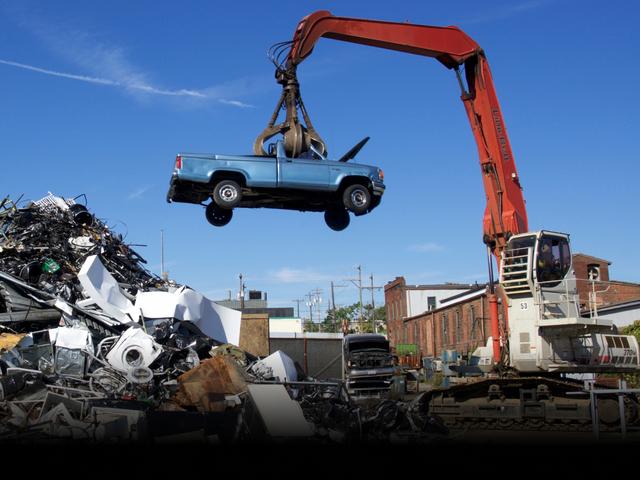Electronic Stability Control is one of the oldest safety technologies in vehicles. Since its inception in the ‘90s, the ESC has developed and evolved significantly, but its core focus has stayed the same: to help prevent a vehicle from sliding unnecessarily and losing control. Needless to say, a vehicle at speed that suddenly loses control because of a loss of traction (even if done on purpose), can lead to disastrous consequences.
It is exactly those scenarios where safety systems like electronic stability control come in handy. The reasons for breaking traction can be something as simple as entering a corner too fast, or even if the road has low grip thanks to wet roads, gravel, snow, or sand. The stability systems are designed to compensate for a lack of grip by reducing engine torque and braking individual wheels, as is deemed necessary by the car’s ECU.
Given all that, how exactly do electronic stability control systems function, what are their components, and are there any downsides to having your car equipped with ESC? Our guide tackles these questions and a lot more.
Become a part of the official Cars24 auto community; CLUTCH, where we host lively auto discussions, updates, and more.
What is electronic stability control?

Electronic stability control is a crucial part of a vehicle’s active safety features. When an exaggerated amount of slip or slide is noticed by the ESC system’s sensors, a predefined degree of braking to individual wheels is applied to help the driver regain control of the car. The ESC’s primary objective is to help prevent the car from spinning out due to the loss of traction.
It should be noted that an ESC system does not prevent a vehicle from flipping over, but it does help the car keep all four wheels in contact with the road, where it is a lot less likely to roll over.
Electronic stability control is used by all car manufacturers, but under different names. Some of them include ‘Vehicle Stability Control’, ‘Electronic Stability Program’, ‘Dynamic Stability Control’, and others.
When does electronic stability control get activated?
.jpg)
In cars equipped with electronic stability control, the system gets activated the moment your car’s engine/motor starts running. The ESC system then keeps a track of your steering inputs throughout, and the moment it notices excessive loss of grip at the wheels, it comes into action. One of the quickest ways to find out if the system is in use is if an orange ESC light flashes on your car’s instrument cluster.
Once the system understands that the car is not heading in the direction of the steering input, it makes adjustments to attempt to correct the car’s course or minimises the sliding done during emergency evasive manoeuvres. The system also comes into action when it notices excessive steering inputs while the car is sliding. Most cars with ESC also offer a button to switch the system off for certain situations where it is not required.
How does electronic stability control work?
Electronic stability control essentially modulates the speed of the engine and the brakes for each wheel. Like most other driver aids, ESC systems turn on when you start your vehicle. Thereafter, the technology quietly operates in the background, all the while monitoring the steering wheel activity, the engine speed, and what each tyre is doing via sensors.
Once the sensors detect that anything out of the ordinary is happening, that’s when the ESC system springs into action. It automatically adjusts for oversteer or understeer situations, by applying or easing the brakes of each wheel individually in an effort to bring the vehicle back in control. It should be noted here that ESC systems don’t work alone. It also makes use of the vehicle’s traction control system, and helps adjust engine speed, and applies the brakes when needed (read: presses down on the accelerator too hard).
The goal here, naturally, is to keep the car in control, but it’s also to keep all four tyres on the road and prevent the car from flipping/toppling over.
What is traction control?

Electronic stability control is a system that goes hand-in-hand with traction control, but the two can not be equated as the same thing. Traction control is an automated system that reduces the vehicle’s power to specific wheels when wheel slip is noticed.
A good example of this is when a vehicle is on a low-grip surface (like one covered with snow or ice) and the driver accelerates hard. When this occurs, the traction control light flashes on the instrument cluster as the amount of power being sent to each wheel is drastically reduced. The traction control system works opposite to what an Anti-lock Braking System (ABS) does in a car as the latter tries to gain traction by reducing the braking force on the slipping tyres. Just like electronic stability control systems, the intention of traction control systems is to avoid spinning out and crashing.
Difference between traction control and electronic stability control

In modern cars, electronic stability control and traction control systems work in collaboration with each other, but they are not the same system. In other words, while they work towards the same goal, they cannot be referenced interchangeably.
Electronic stability control is a system that helps regulate the brakes applied to each wheel once the system notices excessive slipping or steering movement in low-grip environments. Its goal is to avoid a car spinning out of control in low traction conditions. The worst case scenario of having the car flip over completely is also something that an ESC system actively works to prevent.
Traction control manages wheel slippage and helps maintain traction in low-traction environments. This may sound similar to what the ESC system aims to do, but they’re different in one key area: an ESC system cannot cut power to the wheels, whereas traction control can. In other words, stability control aims to keep your car going in a straight line (or the intended direction) even in low-grip conditions. Traction control simply cuts power to the wheels when it senses that there is low grip on offer from the road.
These two systems work in collaboration with each other to ensure that nothing untoward happens when road conditions are less-than-ideal. They also serve to boost the confidence of the driver, thanks to knowing that these systems are working silently in the background to ensure the car stays on the road in a safe manner.
How to operate electronic stability control
In modern cars, there is no need to wonder whether the electronic stability control system is switched on. The ESC system has been designed in such a way that it automatically comes on when you start your vehicle. Another way to tell that the ESC is active is to notice it on your instrument cluster when you start the car. However, keep in mind that the ESC light will only flash briefly before going off. Thereafter, you will only notice it when the system is actively interfering in the car’s running (when there are low-grip conditions). While the car is in motion, the way to tell that your ESC is working is if it flashes repeatedly on your instrument cluster.
Here, a few points should be noted about the ESC system:
1) ESC can be turned off (either partially or completely) via a button located on the dashboard. It is recommended that ESC should be left on for most driving conditions.
2) If the ESC light on your instrument cluster stays on, then there is likely a fault with the system. In this scenario, it is best to head directly to a trusted mechanic to diagnose and fix the issue as soon as possible.
3) ESC is an aid in low-grip conditions, and nothing more. It is by no means a substitute for responsible driving habits on the road. It is still very much the onus of the driver to drive in a safe manner and avoid accidents.
How to turn off electronic stability control
It is advisable to keep the electronic stability control system on for most driving scenarios. The system is there to ensure that any low-grip conditions can be dealt with in a safe manner that will avoid accidents and injuries.
That said, there are certain conditions that require you to switch the ESC system off. An example of such a scenario could be when you are starting your vehicle in deep snow or sand and require wheel spin to get going. Most vehicles come with a switchable ESC system that can be toggled via a button on the dashboard. Simply press the button briefly to disable (partially or completely, depending on how long you press the button) the ESC system. A warning message on the instrument cluster should then indicate that the ESC system has been disabled.
It should be kept in mind that once normal driving conditions are reached, the ESC system must be manually switched back on. The only way it will turn itself back on is if you switch the car off and start it up again.
Electronic stability control components
An electronic stability control system is a complex bit of technology that is made up of a few key components that help in preventing your car from sliding out of control. Typically, it is made up of three kinds of sensors:
1) Wheel-speed sensors: These are the sensors attached to each wheel. Their job is to measure the speed of the wheel in question, which is then relayed to the car’s onboard computer to compare with the speed of the engine.
2) Steering-angle sensors: These sensors are located in the steering column, and detect the inputs the driver is giving via the steering wheel. Put simply, if the car is travelling in a direction that’s different to the steering wheel input, then the ESC system gets activated.
3) Yaw sensor: This sensor’s only job is to measure the side-to-side motion of the vehicle and relay the information to the onboard computer. It then gets compared to what the other sensors are relaying.
Common problems with electronic stability control
In most situations, ESC systems tend to work without any glitches. That said, there are a few issues that can crop up. In no particular order, they are:
1) If your anti-lock braking system is not functioning properly, then an ESC’s readings (and consequently its operation) can be less effective. This usually arises only if your vehicle has worn brake linings or something like air or dirt in your brake fluid.
2) Tyres that are nearing the end of their life can trip up an ESC’s effectiveness. While the road might be providing optimal grip, tyres that are low on tread offer less grip, which will allow for more slip, and that makes the ESC work overtime.
3) If a car is skidding or drifting on purpose, then the ESC is not required. In this case, it’s best to switch the ESC off altogether until regular driving is resumed.
Benefits of electronic stability control
ESC systems are a great addition to the suite of safety systems in cars thanks to the benefits they bring. These include:
1) Helping arrest unintended slides and loss of control in low-grip conditions.
2) Providing confidence to drivers in unfamiliar driving conditions.
3) Preventing avoidable accidents.
Is it safe to drive with the electronic stability control light on?
If the ESC light is permanently on in your vehicle’s instrument cluster, that indicates that there is a malfunction with the system. In that case, it is best to head to the nearest trusted mechanic/workshop to get the issue diagnosed and fixed as soon as possible.
It is also worth noting that a permanently-on ESC light doesn’t necessarily mean that you should pull over and abandon your vehicle. The car can very much be driven with the ESC light on. The only difference is that extra care must be taken while driving in low-grip conditions, considering the ESC system is likely malfunctioning.
Conclusion
Electronic stability control is a great addition to the suite of safety systems in vehicles. It is not a stretch to say that since the technology made its debut in the ‘90s, cars have become a lot safer and easier to drive in all sorts of road conditions.
ESC systems are mandatory on all vehicles in a lot of countries, and India is set to join that list as well. With the adoption of mandatory safety features such as ESC and dual airbags, cars will only get safer, eventually leading to much safer roads for everyone.
FAQs
Q. What are the main components of an ESC system?
An ESC system primarily comprises wheel-speed sensors, steering-angle sensors and yaw sensors.
Q. Is it safe to drive with electronic stability control?
On the whole, cars equipped with ESC systems are much safer than cars without the system.
Q. What happens when ESC is off?
When an ESC system is off, it is a lot more likely for a car to lose control in low-grip environments.
Q. Is ESC like traction control?
ESC and traction control work in conjunction with each other, but they are two separate systems.
Q. What is the advantage of ESC?
Cars equipped with ESC systems are less likely to lose control in low-grip conditions.











.jpg&w=828&q=75)

-(1).jpg&w=828&q=75)


.jpg&w=828&q=75)
.jpg&w=828&q=75)

.jpg&w=828&q=75)










.jpg&w=640&q=75)




